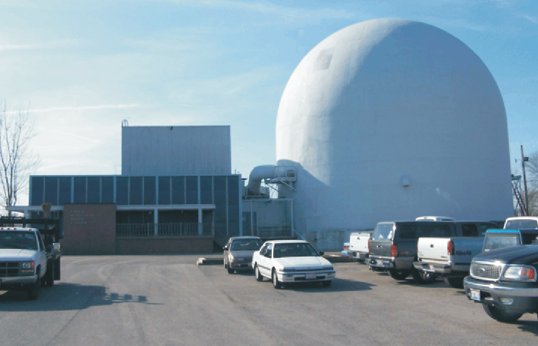 The first nuclear power plant in Ohio was built as a part of the US Atomic Energy Commission’s “Power Demonstration Reactor Program,” which included construction of a reactor by the AEC at a municipal site, with the steam plant equipment supplied by the local utility.
The first nuclear power plant in Ohio was built as a part of the US Atomic Energy Commission’s “Power Demonstration Reactor Program,” which included construction of a reactor by the AEC at a municipal site, with the steam plant equipment supplied by the local utility.
Construction of the PNPF or Piqua Nuclear Power Facility was begun with an official groundbreaking on July 6, 1959. The reactor was built by Atomics International and was contractually owned by the AEC for five years; the Piqua Municipal Power District would buy steam from the AEC reactor to supply its original powerhouse under contract. The City of Piqua supplied operators for the plant, who were trained initially on a prototype reactor of similar type in Idaho.
PNPF was unique among the world’s power reactors in using an organic compound as its coolant. “Santowax OMP,” a commercially available aromatic hydrocarbon in the benzene family, was used for the coolant because it possessed important advantages over water – for example, it did not require high pressure, and it did not interact with most metals. Thus, the nuclear plant could be constructed out of thinner and less exotic materials more common to the petroleum industry than to the nuclear industry.
The reactor first achieved criticality in 1963 and operated fairly successfully for several years, providing the city with the advantage of reducing coal use at its plant which was right in the heart of the community of 20,000 people. The reactor itself was rated at 45 MWt (megawatts thermal) and provided a maximum of 150,000 lbs. per hour of steam at 550F and 430 lbs. pressure to the original municipal power building, where it generated up to 11.4 MWe (megawatts electrical) of power for the municipal system. This was about half of the peak demand of the entire system.
After several years of operation, the reactor encountered technical difficulties and was shut down in January 1966 for investigation and modification. While Atomics International was convinced that these had been solved and was prepared to assist in restarting the reactor, but in March 1967 the AEC decided to drop its organic cooled reactor research program, and in December 1967 announced it was terminating the Piqua contract. The AEC then entered a phase of decommissioning of the plant, removing the fuel and most of the equipment throughout the reactor building and support building through 1969. Today, the two buildings still stand, with the plant officially in “SAFSTOR” status until it is eventually completely dismantled sometime in the future – perhaps around the year 2088. The Department of Energy monitors the integrity of the site on a continuing basis; the site is now used by the city for vehicle parking and storage.
(Thanks to the City of Piqua Ohio and Piqua Municipal Power System for information and assistance.)

